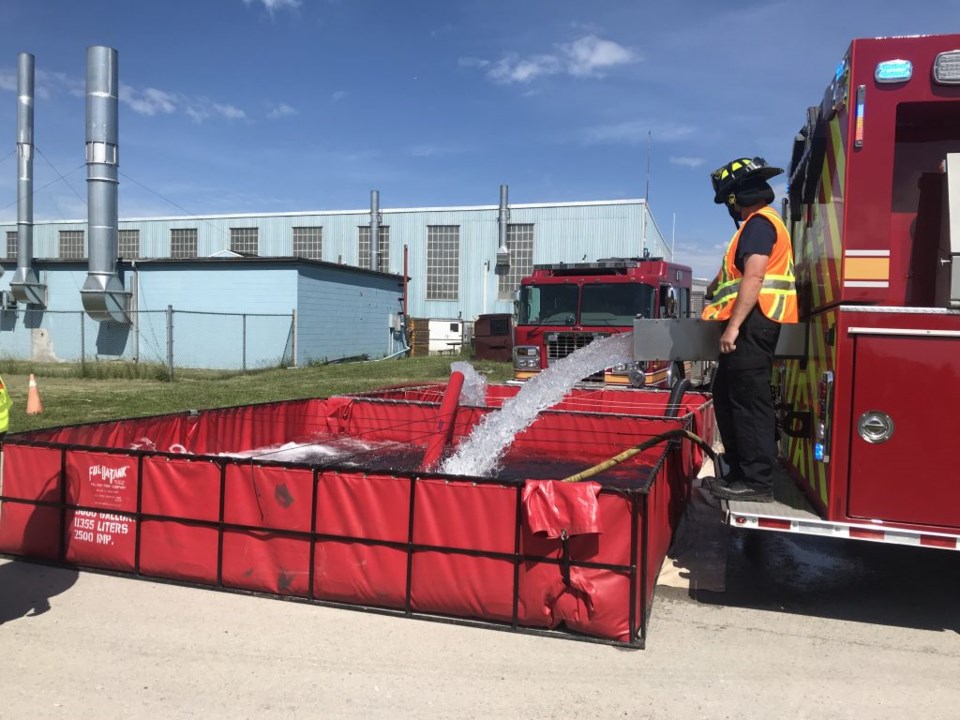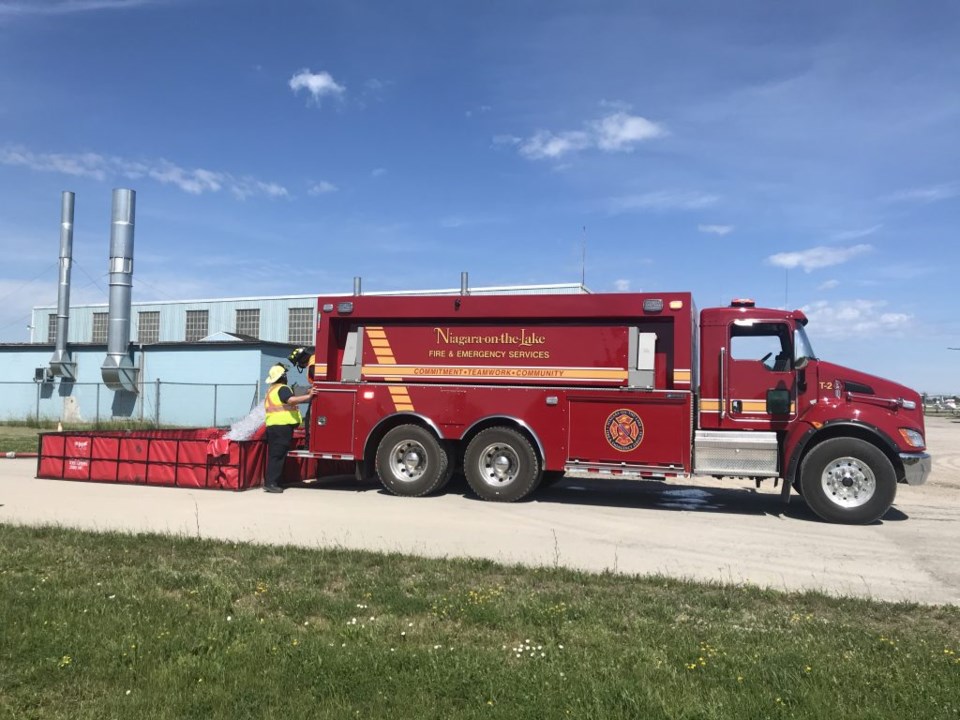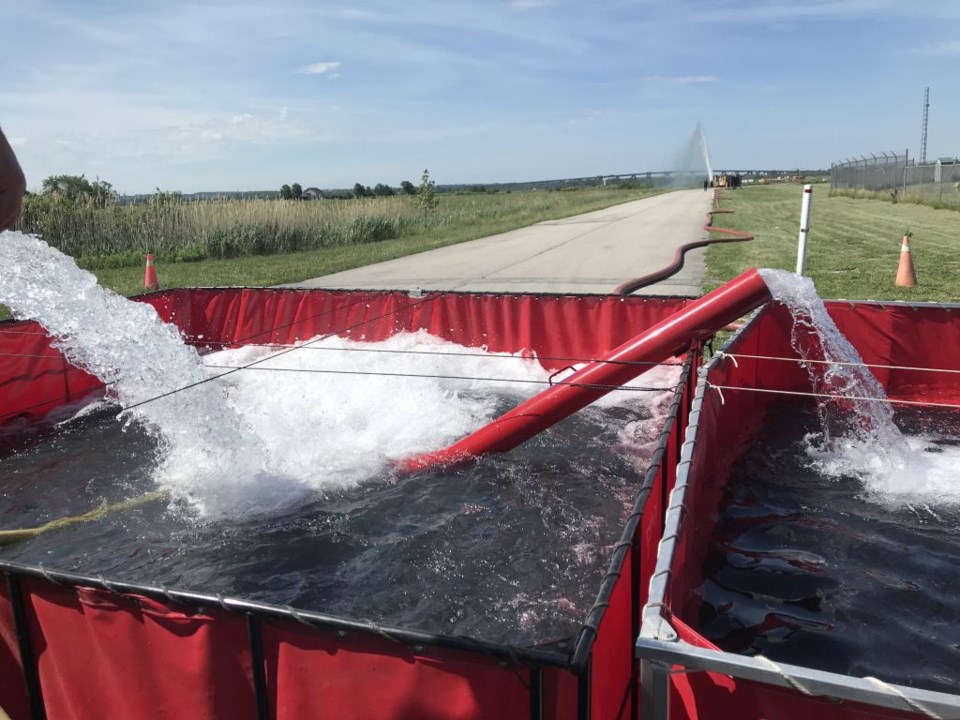
There will be no cost spared when it comes to ensuring the safety of residents and its firefighters, councillors decided Monday.
Thanks to extensive research by Fire Chief Nick Ruller that brought to light a weakness of fire protection in rural areas, councillors were convinced that money needs to be spent on two more tankers.
Ruller described the challenges and time delays in fighting fires in several large rural areas and some smaller pockets that have no town water service or hydrants.
“We’re surrounded by water,” Ruller told councillors Monday, with the lake and the river, but even with water close by, such as in some areas on firelanes, there are other problems that make accessing water difficult, and there are also other areas of concern inland, he said.
Firefighters underwent a training operation on mobile water supply operations, which involve using the department’s two tanker trucks offloading 11,500 litres of water in areas with no watermains, such as firelanes and many other rural areas.
It takes time to offload the water into portable tanks, which is then used up very quickly fighting fires, while the tankers head back to refill sites to fill up before heading back to the fire to deliver more water.
Historically, the town has relied on a mutual aid agreement with Thorold, the closest municipality with tankers, to supplement mobile water tanker shuttle operations at fires, he explained, but it takes time for its volunteer department to arrive at a fire.
The town has required support from Thorold only once in the last two years, “however the frequency of occurrence doesn’t necessarily equate to the level of risk or the potential future locations that are at risk,” he said. "For us its about managing our capacity in these situations."
While there are other options, such as cisterns, they are costly, and have limited capacity, while the mobile system allows tankers to fill up from pressurized hydrants, he said.
“It’s efficient once it’s set up, but it takes a little bit to set it up and coordinate operations,” he explained. It also becomes more time-consuming when the fire is further from hydrants to use as fill sites, and flow rates also become more challenging, he said.
The problem is growing as more large homes and businesses are built on rural properties, Ruller explained. The number of agricultural operations, including wineries and distilleries, and the density of residential areas, have increased over the years.

On long, tight laneways, especially on firelanes that have a small, narrow bridge to cross, fire protection becomes even more difficult. The pumpers can’t get close enough, said Ruller, describing a situation where one tanker will be set up every 700 feet to create a watermain, relaying water from the portable tanks.
When questioned by councillors about the large expense of two new tankers, one that will arrive next year, and the other likely in 2023, Ruller explained once he did his research and identified the risk, his request became a priority. The department, he said, needs to either increase its capacity for safety, or alter operations accordingly, and it’s up to council to decide what to do about it.
While there was some concern over the cost, estimated at $425,000 for each new tanker.

(Photos supplied)
Ruller explained the department has more than $600,000 in its budget for new vehicles for this year, and $300,000 for a replacement vehicle in 2027 that could be moved up.
Lord Mayor Betty Disero and other councillors made their support known, despite the cost.
“We have an extraordinary fire department, predominantly volunteers, with a wealth of knowledge they bring with them,” said
Disero.
She thanked the department for the research they did “to find these gaps in the system and the best solutions,” and added, “as a council, now they’ve told us about this issue, we need to provide the best and safest fire protection for our residents.”
Coun. Erwin Wiens also spoke of the need to support the fire department.
He mentioned the pollution factor when pumping water to fight a fire in a rural area, and by getting it under control in the early stages, the environmental impact, especially to drainage ditches used for irrigation, which is extremely expensive to remediate, is lessened.
“When it comes to safety, especially in the rural area, we need those tankers. The most important thing in a fire is water, and if we don’t have water, that’s a problem.”
Councillors voted to approve the purchase of the two tanker trucks, one that will be ordered this year for delivery likely in 2022, and one for the following year.